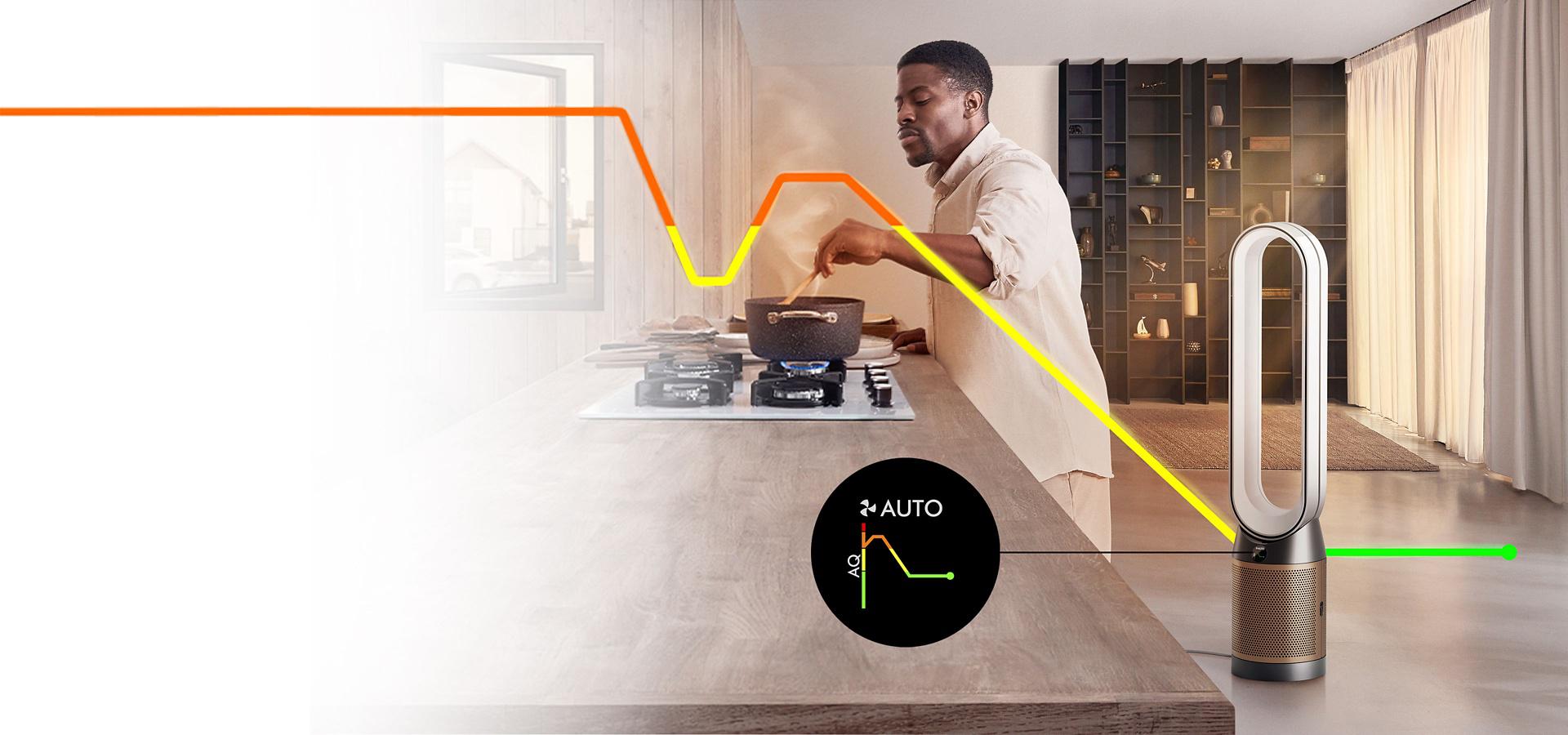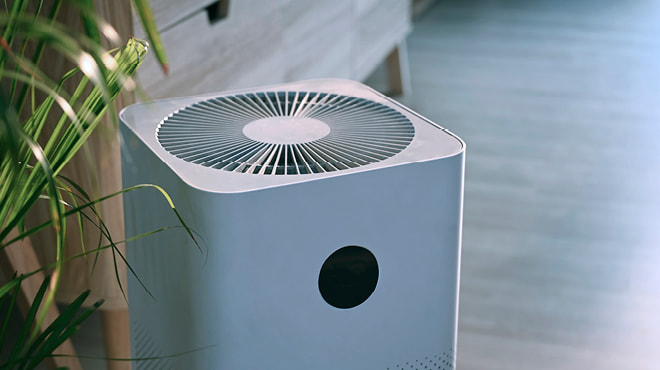Featured
Table of Contents
- – Understanding Mold And Mildew and Its Health ...
- – Can Air Purifiers Help In Reducing Mold And M...
- – The Science Behind Air Purifiers and Mold And...
- – Are Air Purifiers Right for You When Battling...
- – A Multi-Pronged Approach to Conquering Mold A...
- – Living Mold-Free: Beyond Air Purifiers
- – When to Hire the Experts
- – Final Thought: A Breath of Fresh Air and a Mo...

Mold development in your house can be a real issue. Not just does it create unpleasant black spots and musty odors, but it can additionally activate allergic reaction signs and respiratory troubles. Air cleansers are typically suggested as a solution, encouraging cleaner air and decreased exposure to mold spores. However are air purifiers really worth it in the battle versus mold and mildew? This thorough overview discovers the scientific research behind mold and mildew, the function of air purifiers, and the elements to consider when making a decision.
Understanding Mold And Mildew and Its Health Results
Before delving right into air purifiers, let's clarify mold and mildew and its potential wellness risks:
- Mold And Mildew Essential: Mold and mildew is a fungus that grows in moist environments. It recreates by releasing spores right into the air, which can be inhaled and trigger various health and wellness problems.
- Wellness Concerns: Exposure to mold and mildew spores can trigger allergy symptoms like sneezing, coughing, scratchy eyes, and a dripping nose. Sometimes, mold direct exposure can likewise result in respiratory infections and get worse existing respiratory system problems like asthma.
- Mold And Mildew Doesn't Differentiate: While some people are much more conscious mold than others, anyone can experience illness from prolonged direct exposure.
Can Air Purifiers Help In Reducing Mold And Mildew?
Air purifiers can play a duty in handling mold and mildew, however it is essential to comprehend their limitations:

- Capturing Spores: Air cleansers with HEPA filters can successfully record mold and mildew spores flowing airborne. This can help in reducing exposure and potentially ease allergy signs.
- Minimal Impact on Resource: Air cleansers don't get rid of the source of the mold trouble. Mold removal is vital to attend to the source and stop more growth.
- Wetness Control is Trick: Mold prospers in damp atmospheres. Air cleansers do not address moisture problems. Without dealing with the underlying dampness problem, mold will likely return.
The Science Behind Air Purifiers and Mold And Mildew
While air purifiers can not get rid of mold and mildew itself, some study suggests they can be a valuable tool in taking care of mold and mildew direct exposure:
- A 2012 research study released in the journal "Structure and Environment" discovered that air cleansers with HEPA filters dramatically lowered air-borne mold spore concentrations in an examination atmosphere.
- A 2015 evaluation released in the journal "Present Allergic reaction and Bronchial asthma Reports" concluded that air cleansers, along with various other mold and mildew remediation approaches, can be valuable in reducing mold-related signs in allergic individuals.
However, it's essential to keep in mind some constraints:
- HEPA Filter Effectiveness: HEPA filters are not 100% efficient at capturing all mold spores, especially very small ones.
- Filter Maintenance: Regularly replacing HEPA filters according to the maker's instructions is critical for preserving optimal efficiency. Clogged filters lose efficiency.
Are Air Purifiers Right for You When Battling Mold? Factors to Consider
Here are some vital factors to think about when choosing if an air purifier deserves it for your mold scenario:
- Severity of Mold And Mildew Growth: For tiny mold spots, dealing with the dampness resource and eliminating the mold and mildew could be adequate. Air cleansers may be less vital. For comprehensive mold and mildew development, an air purifier can be a useful enhancement to your remediation method.
- Health and wellness Problems: If you experience allergic reaction symptoms or respiratory problems suspected to be mold-related, an air purifier can supply some alleviation and boost interior air high quality.
- Dealing with the Source: Remember, air purifiers are not a substitute for correct mold and mildew remediation. Determining and resolving the source of wetness that's triggering the mold and mildew development is essential for a long-lasting remedy.
A Multi-Pronged Approach to Conquering Mold And Mildew
While air purifiers can be a practical tool, a comprehensive technique is vital to winning the battle against mold:
- Wetness Control: One of the most crucial action is to recognize and deal with the resource of moisture that's allowing mold to grow. This might entail fixing leaky pipes, improving air flow in washrooms and kitchens, or addressing condensation issues.
- Mold Elimination: Professionals suggest professional mold removal for considerable mold and mildew development. They have the expertise and equipment to securely get rid of mold and avoid further spread. For little mold and mildew patches, you may be able to deal with elimination yourself, complying with safety guidelines.
- HEPA-Filtered Vacuuming: After mold and mildew removal, HEPA-filtered vacuuming can help get rid of staying mold spores from surface areas.
- Air Purifier Combination: Once the source of the mold is dealt with and the mold itself is removed, an air purifier can be a useful tool to catch staying airborne spores and boost interior air top quality.
Living Mold-Free: Beyond Air Purifiers
Below are some extra suggestions to promote a mold-free atmosphere:
- Maintain Low Indoor Humidity: Go for a moisture degree in between 30% and 50% making use of a dehumidifier in damp climates. This assists avoid mold growth.
- Rise Air Flow: Boost air flow in your house by opening up home windows on a regular basis and making use of exhaust fans in washrooms and kitchens.
- Tidy and Dry Damp Surfaces: Immediately clean and dry any kind of moist surface areas, such as spills or condensation, to avoid mold from settling.
- Routinely Examine Prone Locations: Pay attention to locations prone to mold growth, like restrooms, cellars, and attics. Frequently check for signs of mold and mildew and address dampness issues immediately.
- Consider Mold-Resistant Materials: When remodeling or replacing building products, consider utilizing mold-resistant alternatives, specifically in moisture-prone locations.
When to Hire the Experts
While some mold removal jobs can be tackled by yourself for tiny mold spots, there are situations where expert help is essential:
- Extensive Mold Development: If you uncover a huge location of mold and mildew development, particularly if it covers greater than 10 square feet, it's ideal to call in a specialist mold removal company. They have the knowledge and tools to securely get rid of the mold and mildew and protect against further spread.
- Health and wellness Worries: If you or your relative experience consistent respiratory troubles or allergy signs suspected to be mold-related, consulting a medical care professional and a mold removal specialist is suggested.
- Hidden Mold and mildew: If you suspect mold development behind wall surfaces or in crawlspaces, specialist help is necessary to situate and remove the mold and mildew securely and successfully.
Final Thought: A Breath of Fresh Air and a Mold-Free Home
Mold and mildew development in your house can be a worrying issue, but with the right strategy, you can win the battle and develop a healthier living atmosphere. While air cleansers can be a useful tool in taking care of mold and mildew exposure, remember they are not a standalone remedy. By dealing with the resource of wetness, implementing proper mold and mildew remediation strategies, and including preventative actions, you can take a breath much easier in a mold-free home.
Additional Considerations:
- Air Top Quality Testing: For severe mold and mildew issues or if you have health worries, take into consideration professional air high quality testing to analyze mold spore degrees and direct your removal efforts.
- Long-Term Surveillance: After successful mold remediation, it's a good idea to monitor your home for signs of reappearance, specifically in locations previously susceptible to mold and mildew development.
By taking a positive strategy and combining these methods, you can develop a healthy and mold-free setting for yourself and your family.
Table of Contents
- – Understanding Mold And Mildew and Its Health ...
- – Can Air Purifiers Help In Reducing Mold And M...
- – The Science Behind Air Purifiers and Mold And...
- – Are Air Purifiers Right for You When Battling...
- – A Multi-Pronged Approach to Conquering Mold A...
- – Living Mold-Free: Beyond Air Purifiers
- – When to Hire the Experts
- – Final Thought: A Breath of Fresh Air and a Mo...
Latest Posts
Not known Factual Statements About Is It Safe To Put Yeti Ramblers In The Dishwasher?
Are Yeti Ramblers Compatible With Dishwashers? Can Be Fun For Everyone
The Main Principles Of Will The Dishwasher Harm Your Yeti Rambler?
More
Latest Posts
Not known Factual Statements About Is It Safe To Put Yeti Ramblers In The Dishwasher?
Are Yeti Ramblers Compatible With Dishwashers? Can Be Fun For Everyone
The Main Principles Of Will The Dishwasher Harm Your Yeti Rambler?